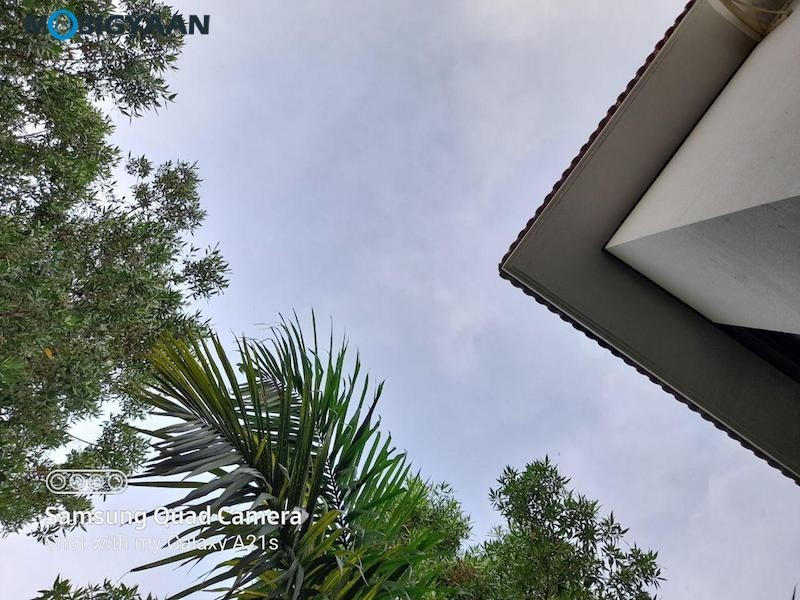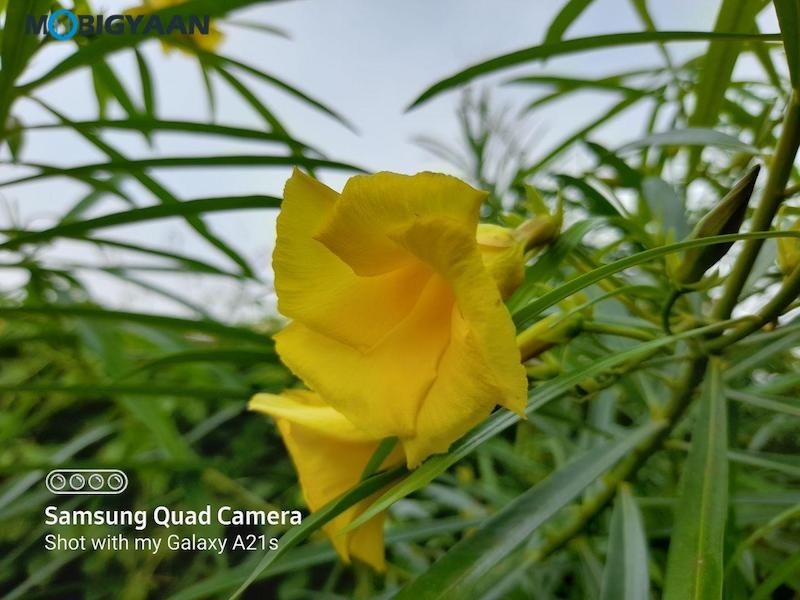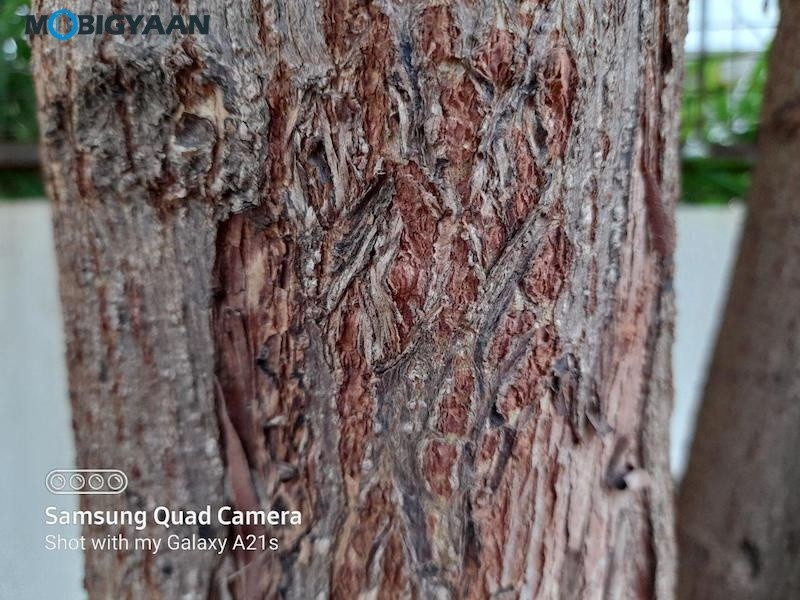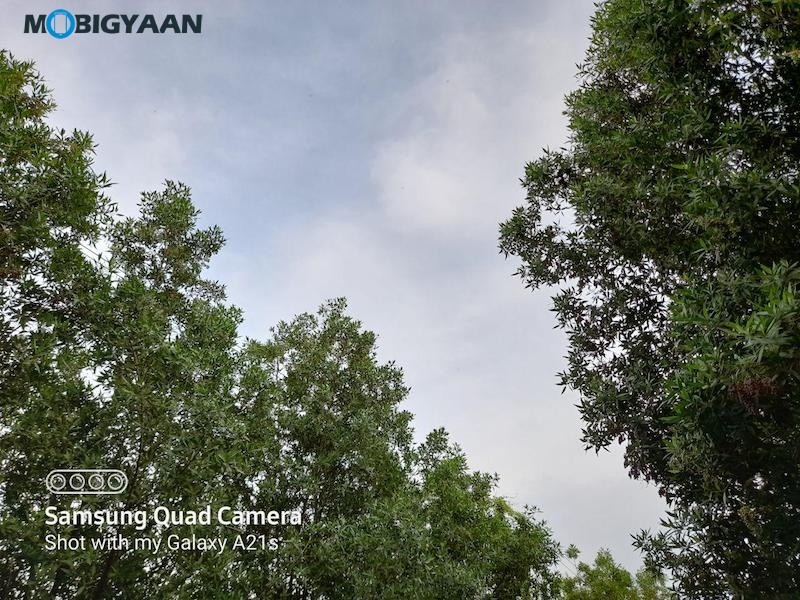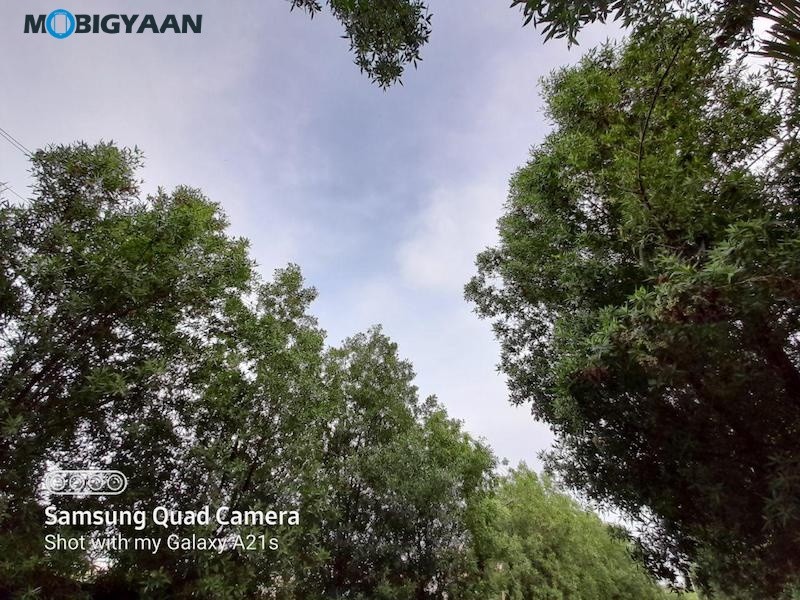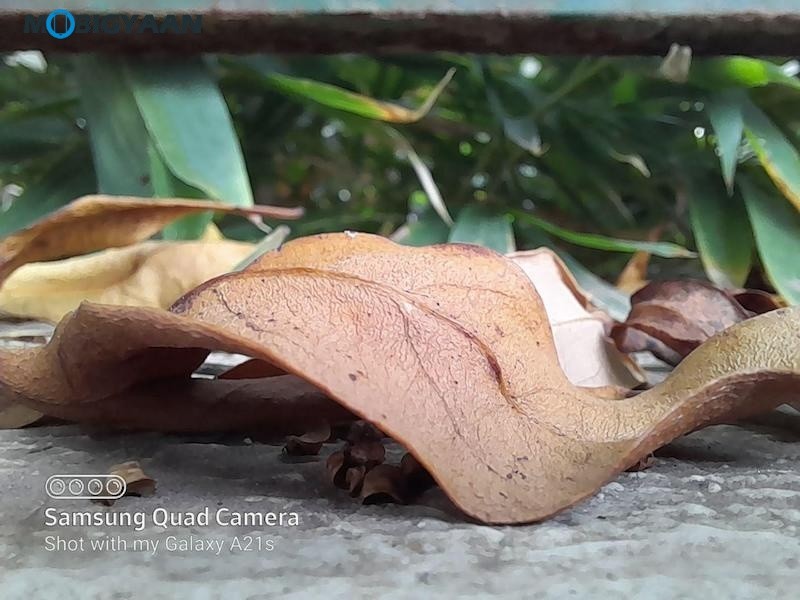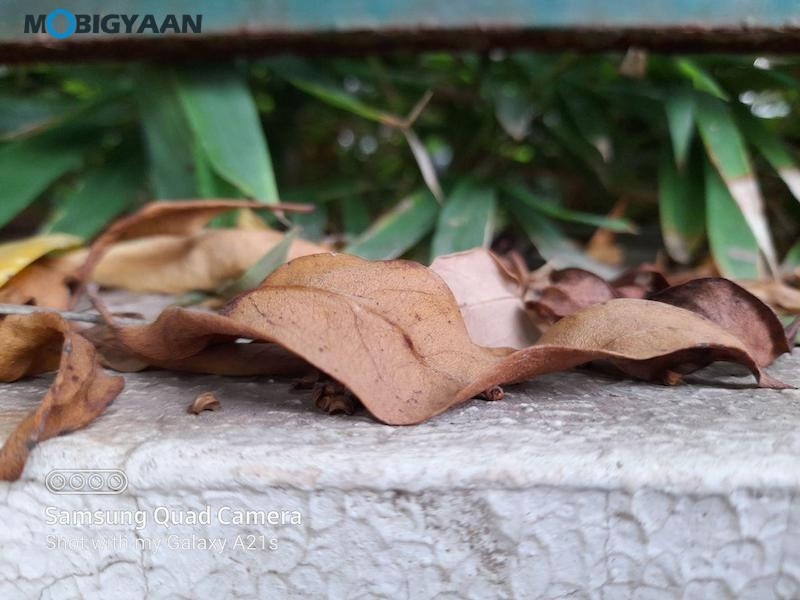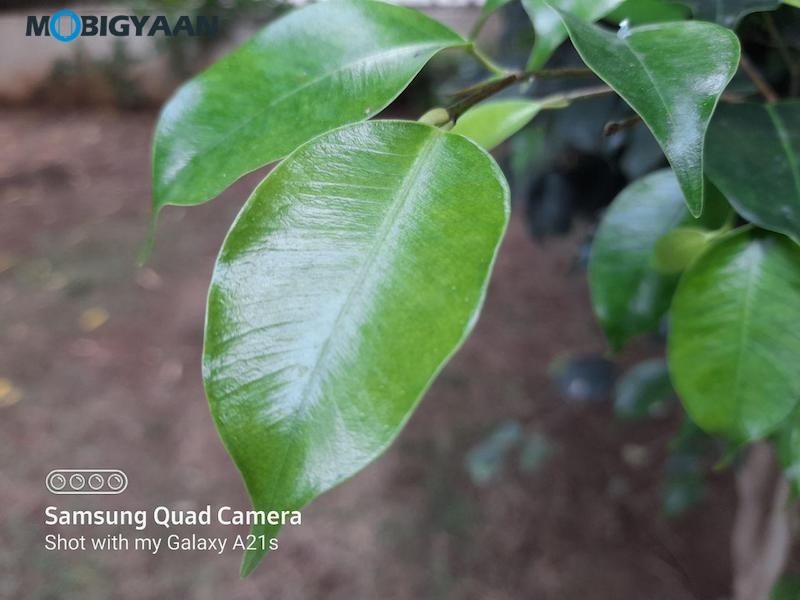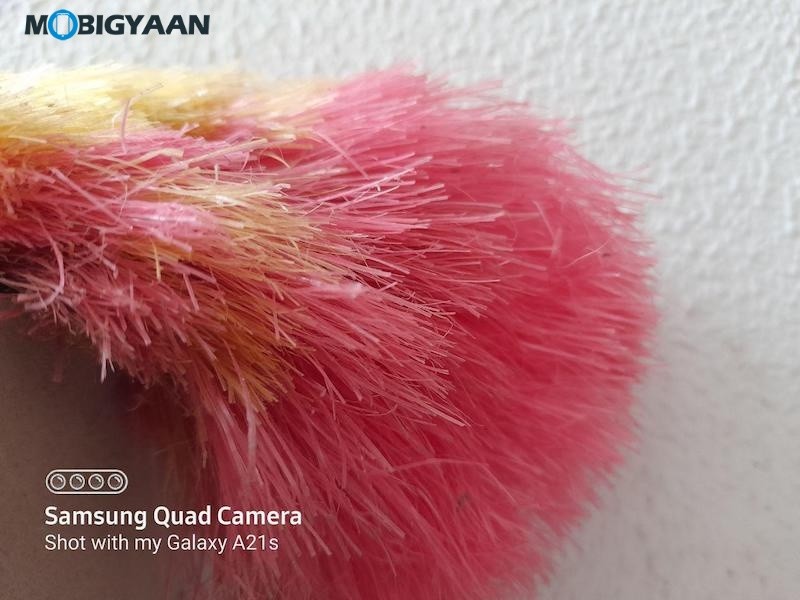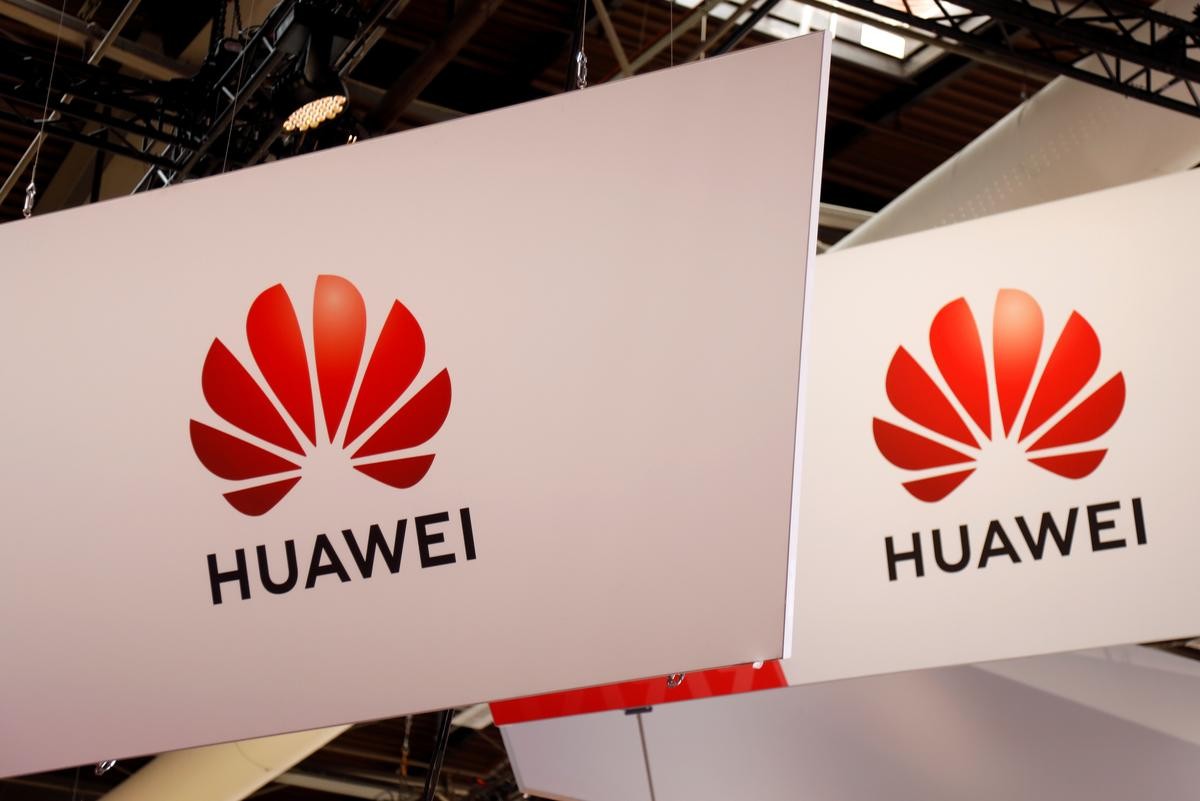Samsung has launched its entry-level smartphone in its A-series and it’s the successor to the Samsung Galaxy A20s launched last year. The main highlights of the Samsung Galaxy A21 are its 48 MP quad cameras, 5,000 mAh battery, fast charging, and Infinity-O punch-hole holographic design. At the price of Rs 16,499, how is the new Samsung Galaxy A21s? See our Samsung Galaxy A21s review.
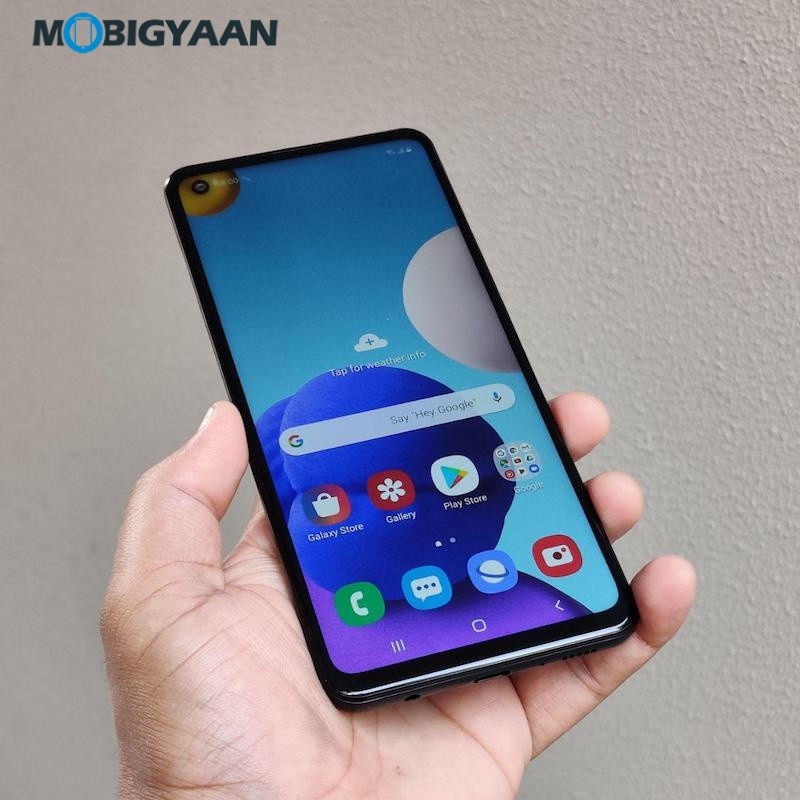
Samsung Galaxy A21s Specifications
- Display: 6.5-inch Infinity-O PLS TFT display, HD+ resolution (1600 x 720 pixels)
- Software: One UI 2.1, Android 10
- CPU: 8nm Samsung Exynos 850 SoC
- GPU: Mali-G52 MC2 Graphics
- Memory: Up to 6 GB RAM
- Storage: Up to 64 GB internal, expandable up to 512 GB
- Main Camera: Quad Cameras (48 MP + 8 MP + 2 MP + 2 MP)
48 MP main camera
8 MP ultra-wide-angle camera
2 MP depth sensor
2 MP macro sensor - Selfie Camera: 13 MP
- Others: Fingerprint sensor, Samsung Pay, Dolby Atmos
- Connectivity Options: Dual 4G VoLTE, Wi-Fi 802.11 ac (2.4GHz + 5GHz), Bluetooth 5, GPS + GLONASS, USB Type-C
- Battery: 5,000 mAh with 15W fast charging
- Price: ₹16,499
Design, Display, & Build
The Samsung Galaxy A21s uses a punch-hole camera design on the front which Samsung calls it Infinity-O design. The glossy back with holographic patterns gives the phone a standout look alongside the small quad-camera bump on the top left side. The sides and edges are curved, hence the handling is quite convenient.
Compared to the predecessor Galaxy A20s, the Samsung Galaxy A21s has been upgraded in the design area. The display is a 6.5-inch Infinity-O TFT display with an HD+ screen resolution.
On the right side, the phone has a power key and volume controls whereas the left side hold a triple-slot SIM tray. The top has a microphone and the bottom has a USB Type-C, 3.5mm jack, loudspeakers, and a microphone.
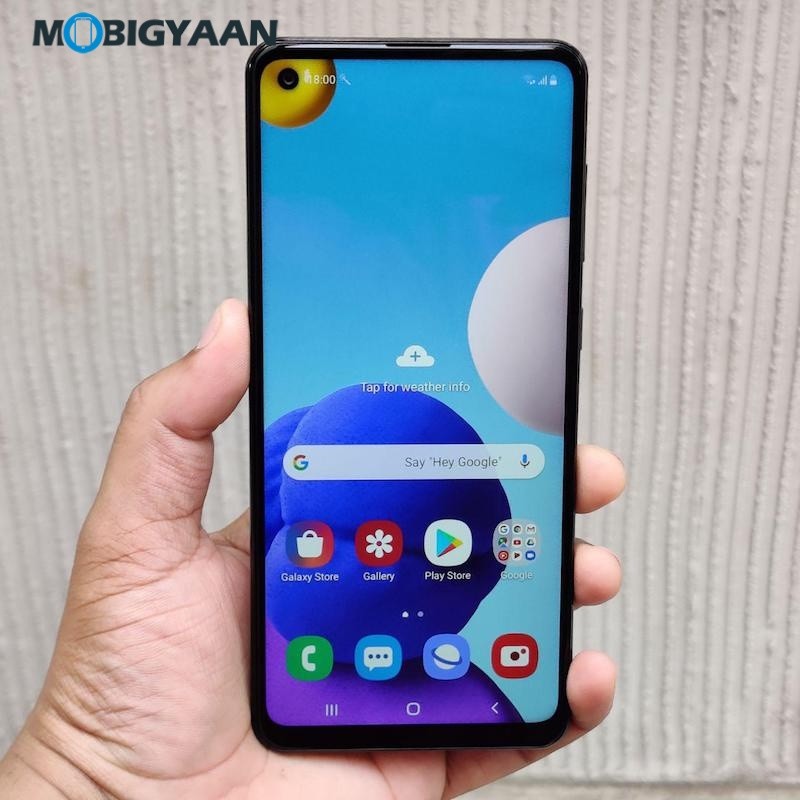
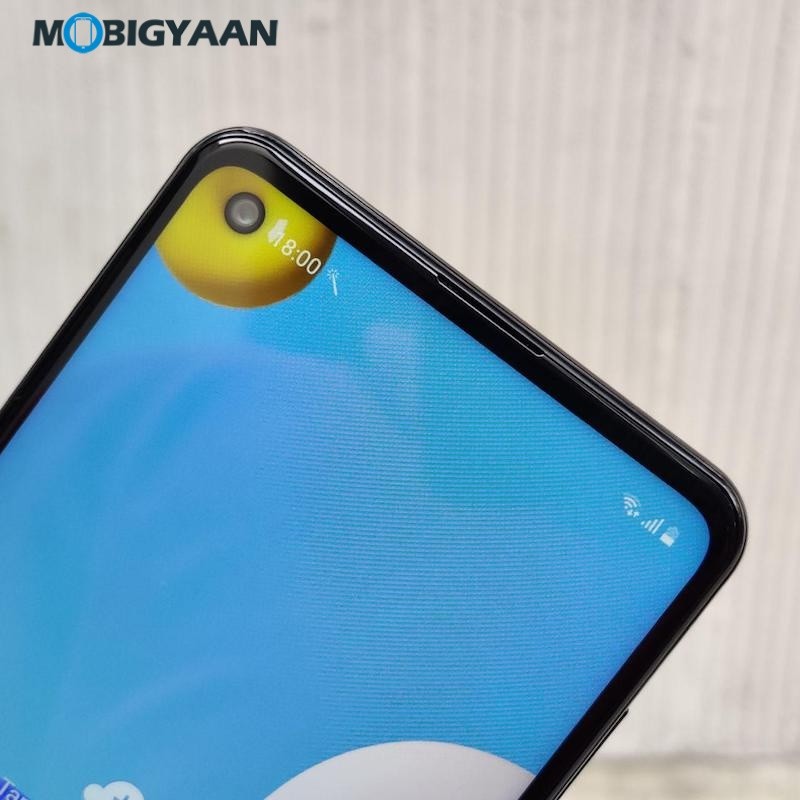
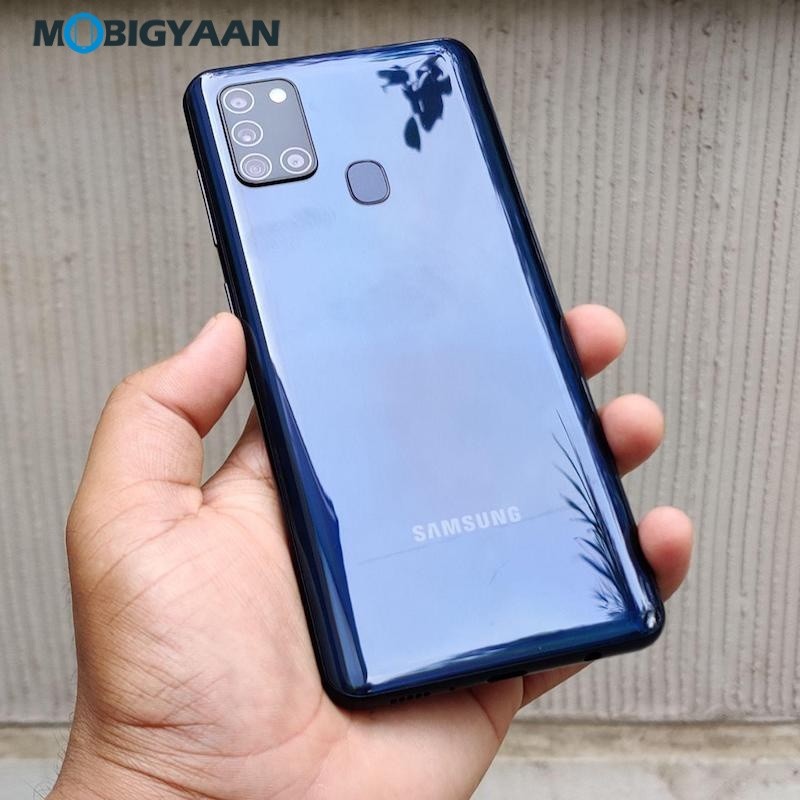
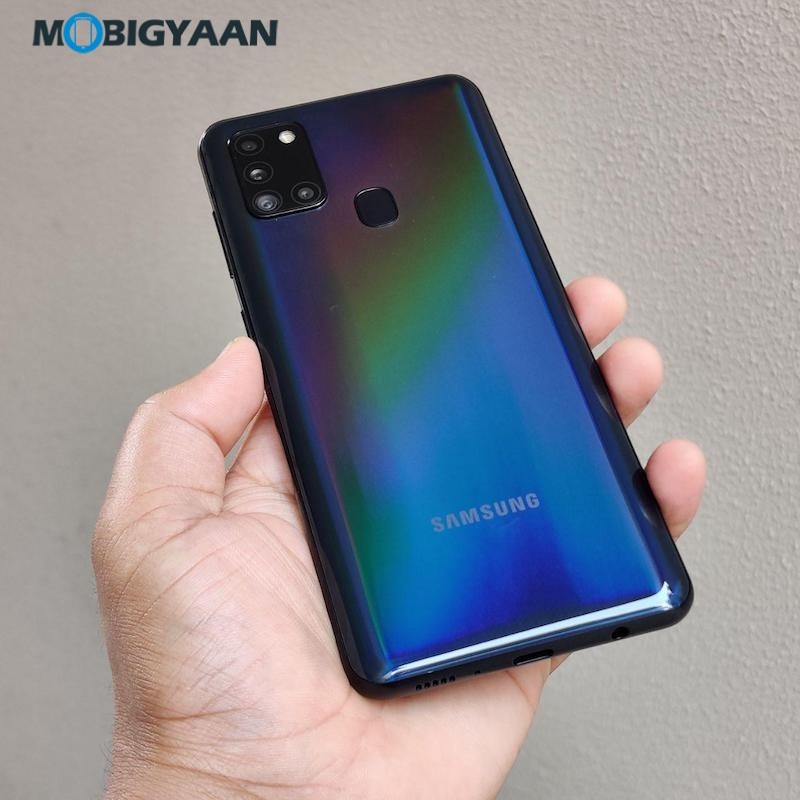
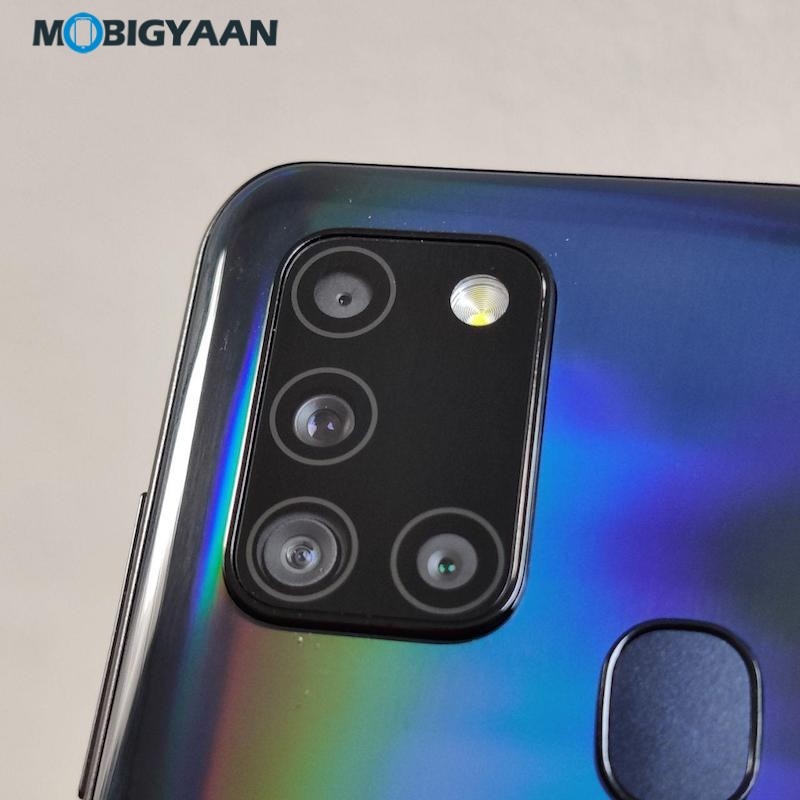
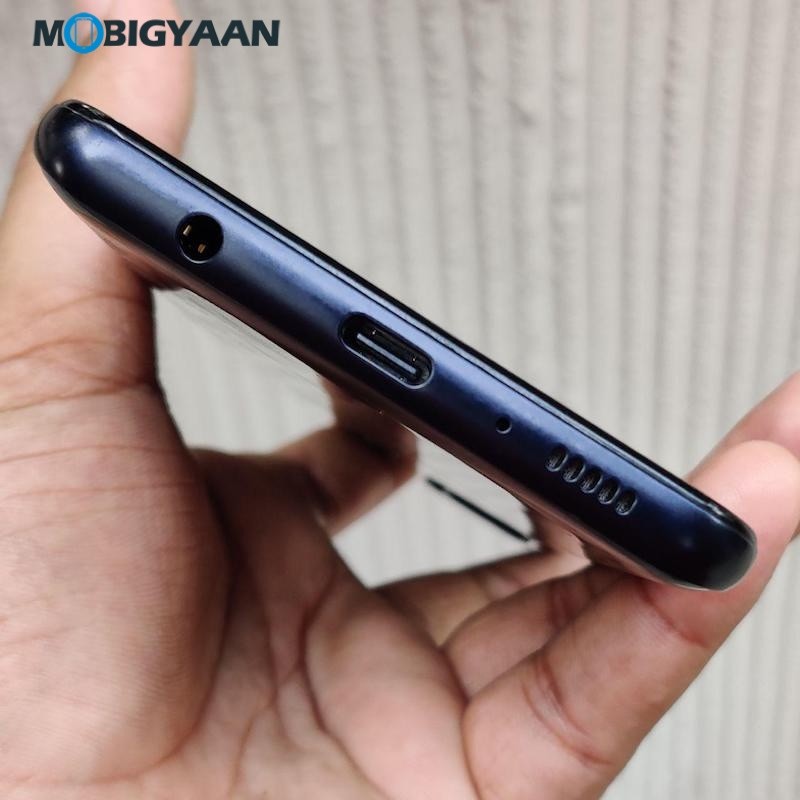
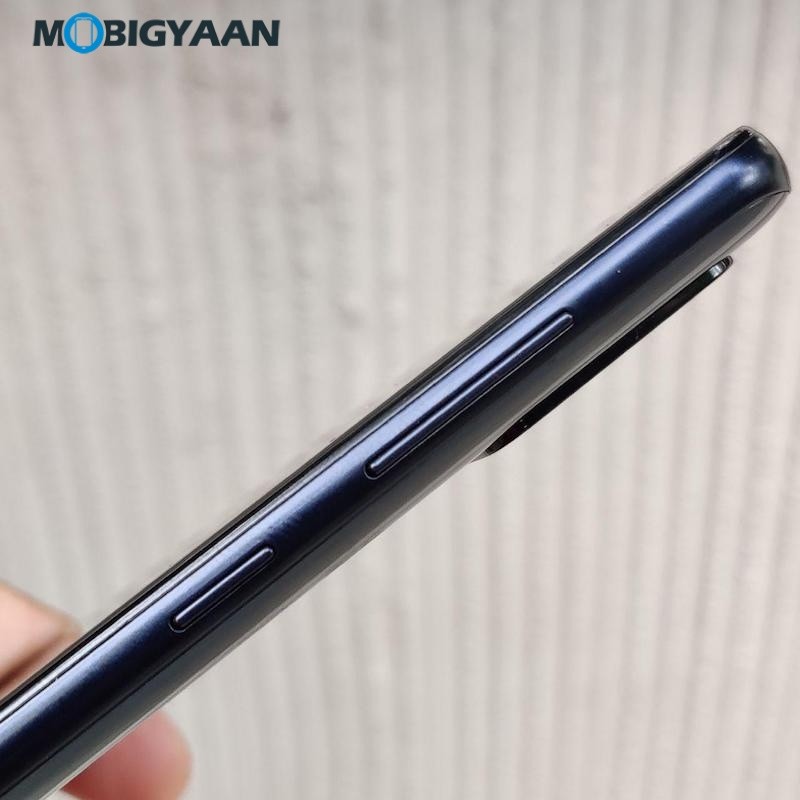
Software & User Interface
Moving to the software, the Samsung Galaxy A21s runs on the Android 10 latest build with Samsun’s OneUI 2.1 on top. The performance of the UI is smooth in our initial use, however, you will see pre-installed apps that can be removed, the interface comes with a little bloatware. Apps such as Facebook, Netflix, OneDrive comes pre-installed and can’t be uninstalled, but the rest of the bloatware can be removed easily.
With the new software, the Samsung Galaxy A21s has numerous features built-in, although you don’t get Always On display feature as it has a TFT screen, you do get some new features like Music Share, Quick Share as well as Dark mode, Smart View, Ultra Data Saving, Dolby Atmos, Focus mode, Dual Messenger, Game Launcher, Fingerprint sensor gestures, and Blue light filter.
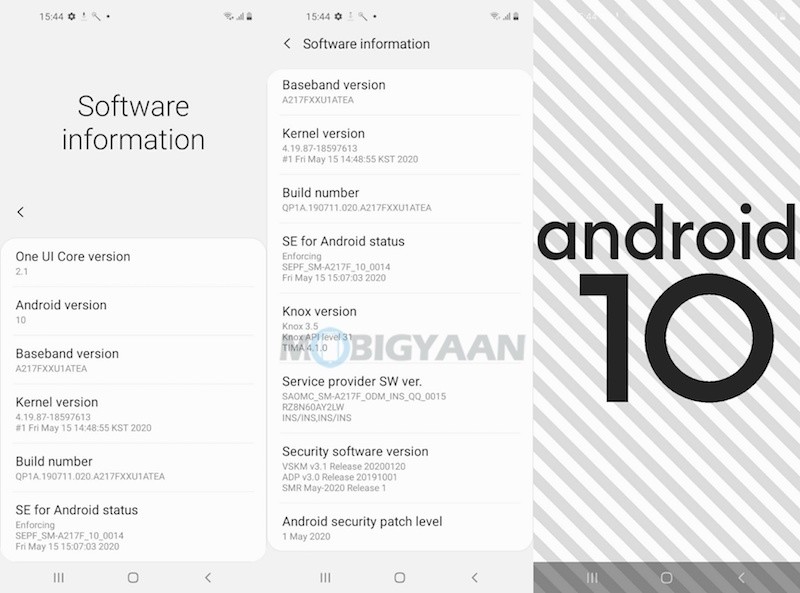
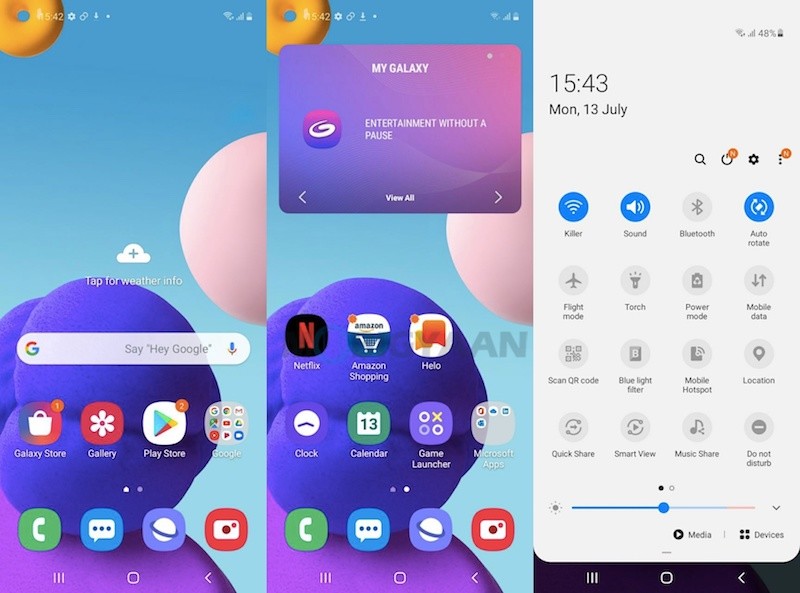
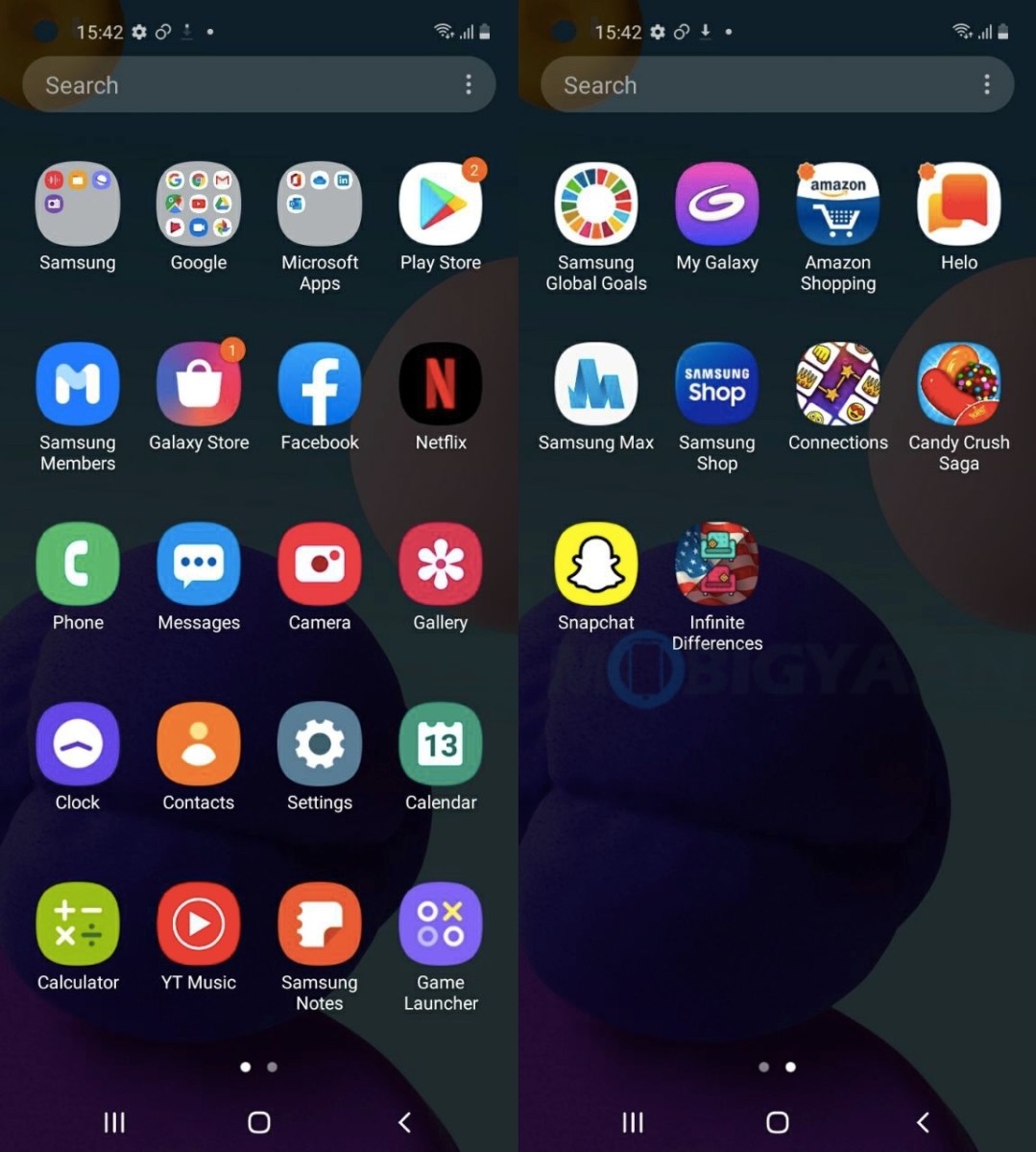
To know more about the OneUI 2.0 and later, refer to our past reviews of the Samsung Galaxy smartphones.
Hardware, Performance, & Gaming
When it comes to the hardware, the Samsung Galaxy A21s uses a new 8nm homegrown chip Exynos 850 which is an octa-core SoC laced with Mali-G52 GPU, up to 6 GB RAM and 64 GB storage.
On the performance side, the phone has enough power to perform daily tasks, and good for light to moderate usage. Since the CPU is based on the power-efficient A55 cores, it isn’t the best for complex multitasking and heavy load.
Comparing with the Snapdragon 730G and similar chips in this price range, the performance falls behind and the benchmarks scored lowered in contrast. If you want a faster performance out of the phone, you can pick the Snapdragon 730G instead.
Gamers should also note, the Exynos 850 comes with the Mali-G52 graphics processing unit which is below the Adreno 618 in terms of overall performance. Games should be running file on low to medium graphics, however, to play games on higher graphics, pick a faster GPU.
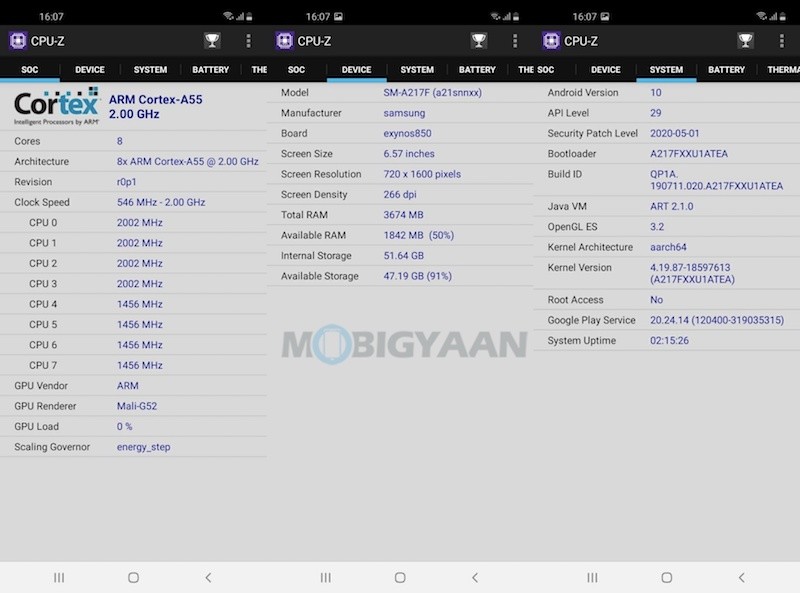
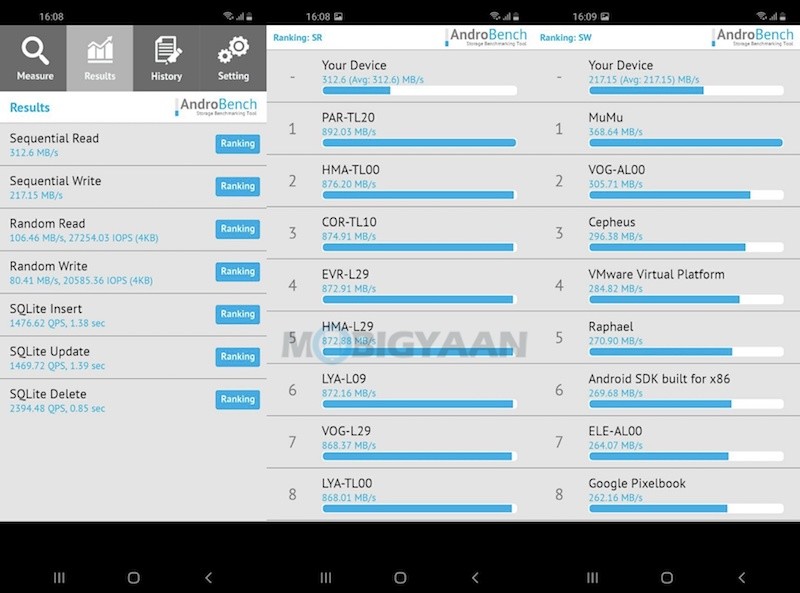
Cameras
Jumping to the cameras on the phone, you will find a quad-camera setup on the backside and a single camera for selfie needs. The camera highlights its 48 MP sensor which is at par with on-going camera trends and comparable with its rivals. Although a few smartphones like Samsung Galaxy M31, realme X2 and a few use a 64 MP camera module instead.
Digging more into the quad cameras, the rest three cameras are 8 MP for wide-angle, 2 MP for Macro close-up shots, and 2 MP for Depth measuring. The front side has a 13 MP sensor for selfie and video calling.

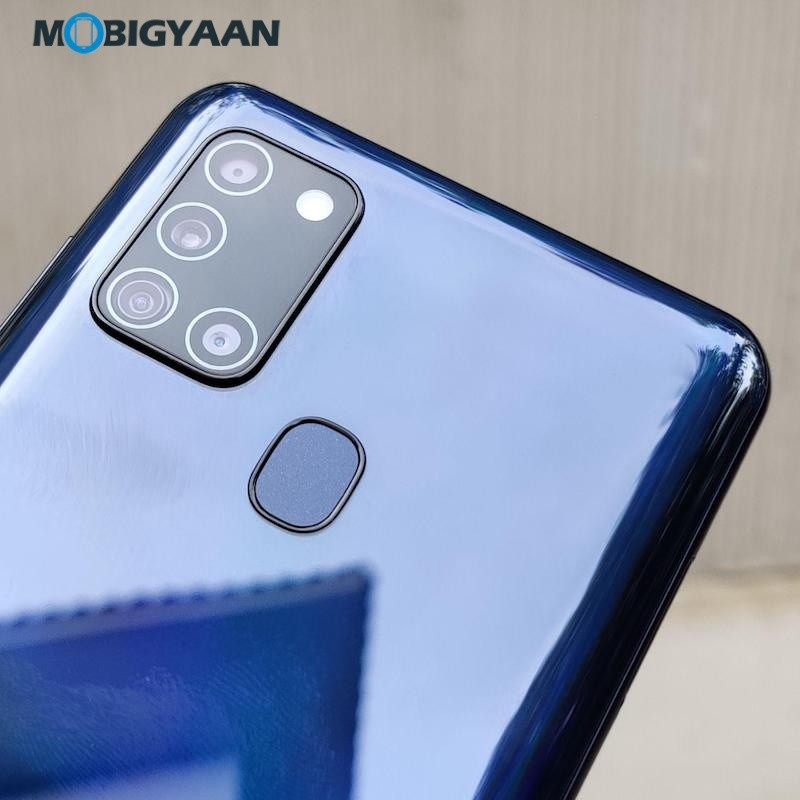
The camera interface offers not many features, you get a wide-angle mode which also works for video, macro mode for taking close-ups, live focus, pro mode, food mode, and DECO PIC feature which is a live filter with faces as you see on Instagram and Snapchat.
We didn’t find any 4K video recording feature as well as 1080p video at 60fps. In addition to that, doesn’t capture slow-motion videos where the competition is far better in terms of overall camera features.
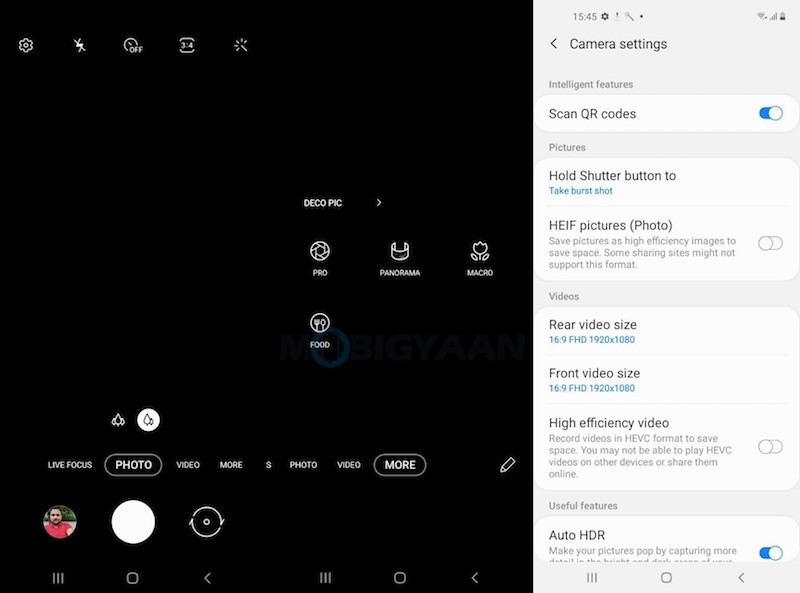
We took some shots to see how the camera performs, take a look at the camera samples we took from the Samsung Galaxy A21s cameras.
Samsung Galaxy A21s Camera Samples
Battery Life
The Samsung Galaxy A21s comes with a long-lasting battery of 5,000 mAh with 15W fast charging support. The battery runs about a day and a half on moderate usage and can last for up to 21 hours of video playback time, this is because of the HD+ display and the power saving CPU.
Thanks to the fast charging, the phone can be charged in as low as about an hour or so. We have no complaints with the fast charging and with the battery performance, in fact, this is where the phone performs well and can be a good point of consideration.
Verdict
The Samsung Galaxy A31 has a good battery performance, a standout holographic design, a 48 MP camera, optimized OneUI 2.1 UI, and fast charging support. However, at the price of Rs 16,499, the phone misses out on a crisp Super AMOLED display, 90 Hz refresh-rate, camera features like 60fps video, and slow motion. Also, the competition is far better in terms of overall performance, you can opt phones with Snapdragon 720G, Snapdragon 730G, and better GPU in this segment if this is your budget.
Strength
- Standout Looks
- 48 MP camera
- Reliable 5,000 mAh battery
- Fast charging support
- Dedicated microSD card slot
Weakness
- TFT HD+ display
- No 4K and 1080p at 60fps video recording
- No slow-motion video recording

